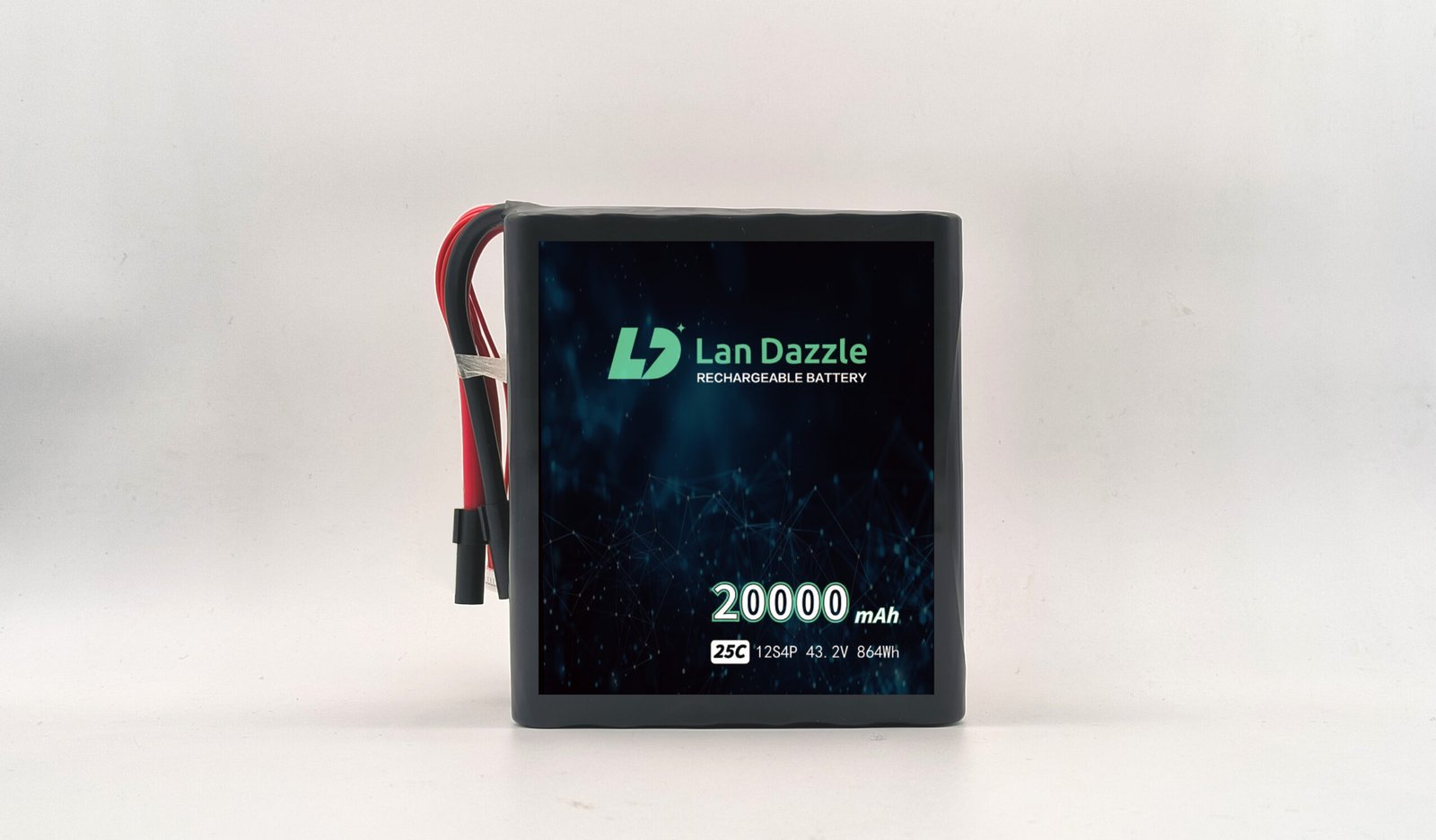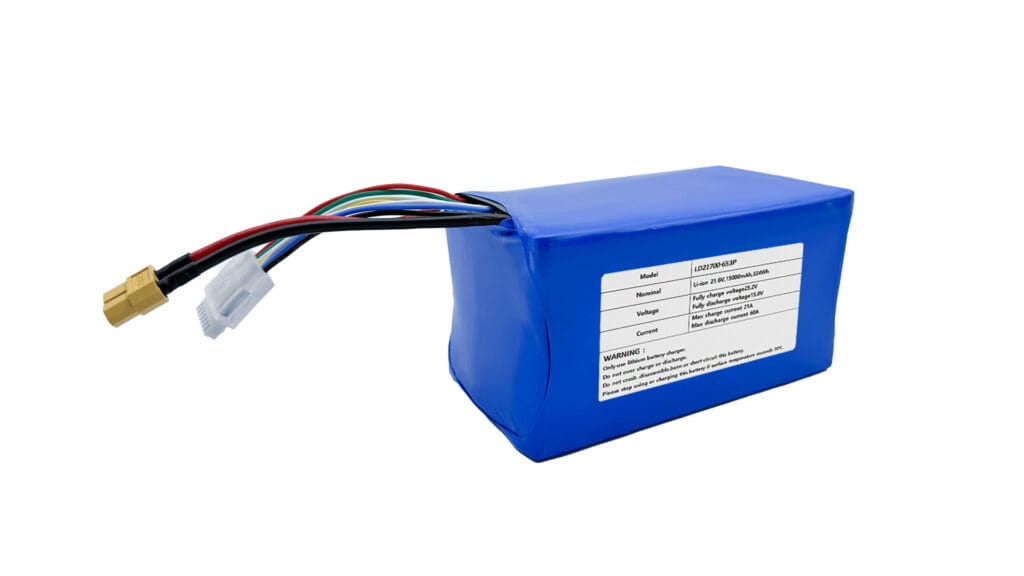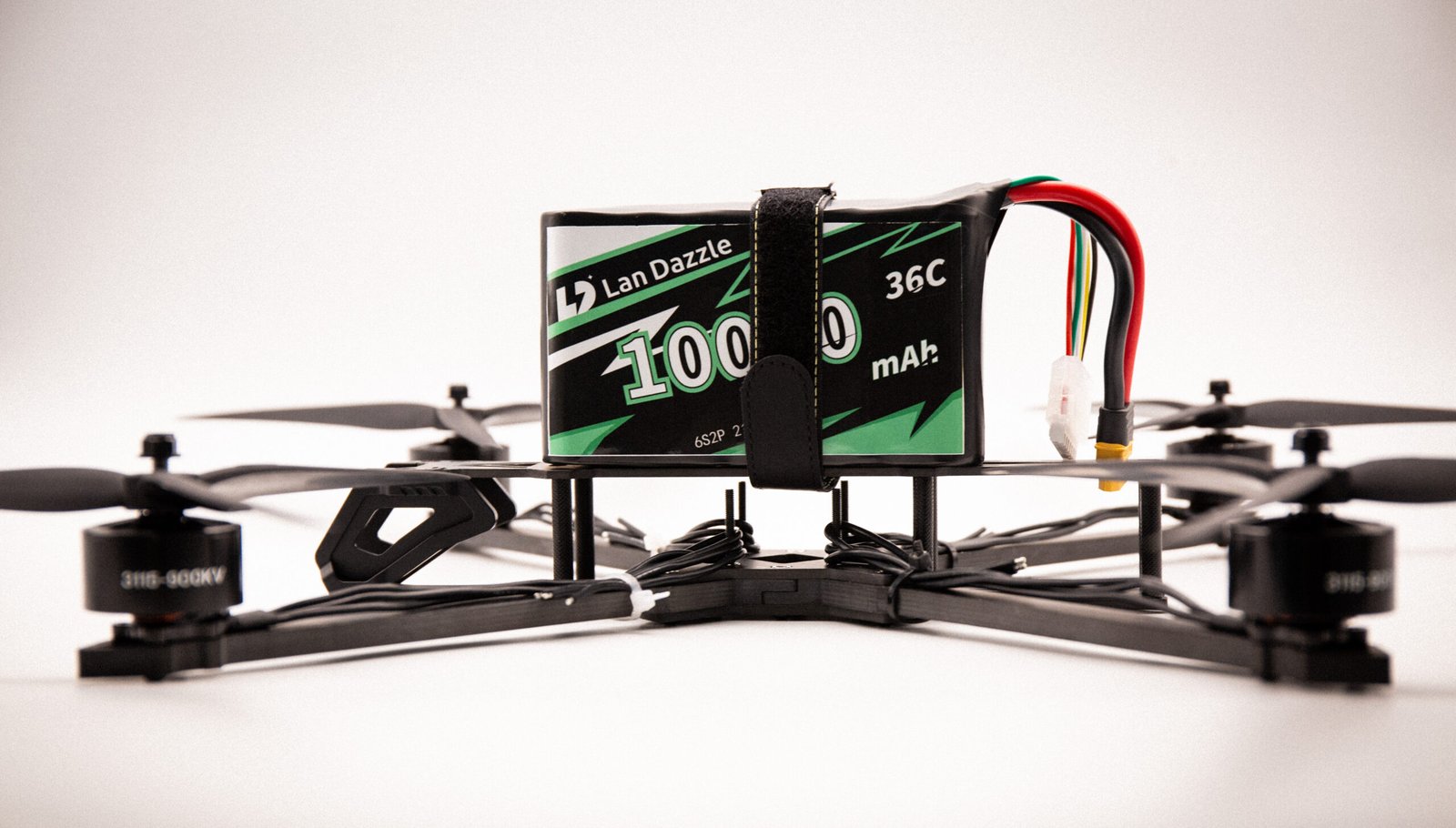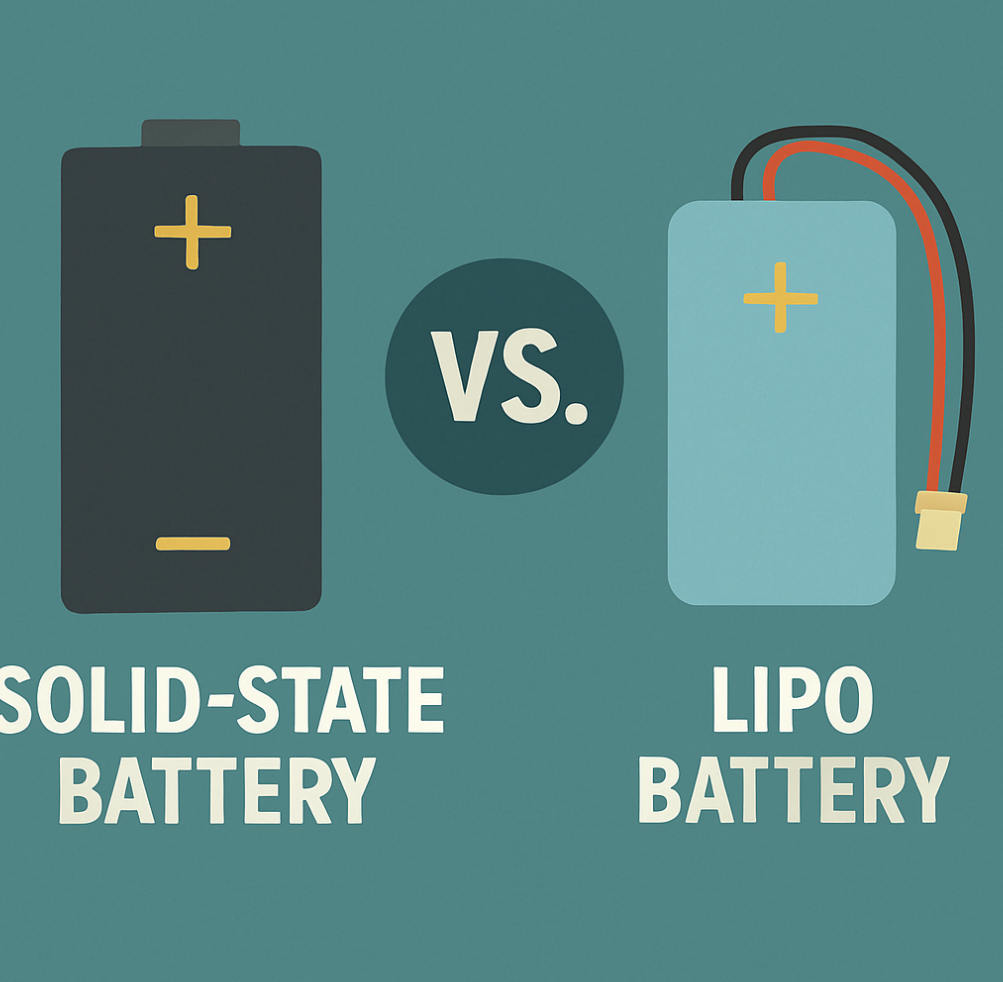Lithium Polymer (LiPo) batteries have revolutionized the way we power portable devices, from smartphones to electric vehicles. Among the various configurations available, the 12S LiPo battery stands out as a powerhouse, particularly favored in demanding applications like agricultural drones. This comprehensive guide will delve into the world of 12S LiPo battery, covering everything from their fundamental specifications and applications to crucial safety and maintenance practices. Whether you’re a seasoned drone operator or just curious about this vital technology, this guide has you covered.
What is a 12S LiPo Battery?
The designation “12S” in a LiPo battery signifies that it consists of 12 individual lithium polymer cells connected in series. Each standard LiPo cell has a nominal voltage of 3.7 volts. When these 12 cells are linked in series, their voltages add up, resulting in a total nominal voltage of 44.4 volts for a 12S LiPo battery. This higher voltage output makes 12S batteries ideal for applications that require significant power, such as the powerful motors found in many agricultural drones. These drones often need to carry substantial payloads like pesticides or fertilizers, demanding robust and reliable power sources.
Key Specifications and What They Mean for Agricultural Drones
Understanding the specifications of a 12S LiPo battery is crucial for selecting the right power source for your agricultural drone:
- Voltage (V): As mentioned, the nominal voltage is 44.4V. However, the actual voltage can range from around 3.0V per cell when fully discharged to 4.2V per cell when fully charged, giving a full range of approximately 36V to 50.4V for a 12S pack. This high voltage ensures efficient operation of the drone’s motors and power systems.
- Capacity (mAh): Measured in milliamp-hours (mAh), capacity indicates the amount of electrical charge the battery can store. A higher mAh rating generally translates to longer flight times for your agricultural drone, allowing for more extensive coverage of fields in a single operation. Common capacities for 12S batteries in agricultural drones range from 10,000 mAh to 30,000 mAh or even higher.
- C-Rating: The C-rating specifies the rate at which the battery can be safely discharged and charged. For example, a 10,000 mAh battery with a 10C discharge rating can theoretically deliver 100 Amps of continuous current. Agricultural drones, especially during takeoff and heavy lifting, require batteries with a sufficient discharge C-rating to provide the necessary power. Charge C-ratings indicate how quickly the battery can be recharged without damage.
- Dimensions and Weight: These factors are critical for agricultural drones, as they directly impact the drone’s payload capacity and flight efficiency. 12S batteries, while offering high power, can be relatively large and heavy. Choosing the right balance between capacity and weight is essential for optimal drone performance.
- Connectors: Common connectors like XT90 or AS150 are used with 12S batteries in agricultural drones due to their ability to handle high currents and provide a secure connection.
Applications of 12S LiPo Batteries in Agricultural Drones
The high power and energy density of 12S LiPo batteries make them the preferred choice for many agricultural drone applications, including:
- Crop Spraying: Drones equipped with 12S batteries can carry significant amounts of liquid pesticides or fertilizers, enabling efficient and targeted spraying of large agricultural fields. The high voltage ensures the powerful pumps and motors operate effectively.
- Field Mapping and Surveying: Drones used for aerial photography, multispectral imaging, and field analysis often rely on 12S batteries for extended flight times, allowing them to cover vast areas and collect valuable data.
- Seeding and Planting: Some advanced agricultural drones utilize 12S power to operate specialized seeding or planting mechanisms, contributing to precision agriculture.
- Livestock Monitoring: Drones equipped with thermal cameras and powered by 12S batteries can be used to monitor livestock health and location over large pastures.
Charging and Maintaining Your 12S LiPo Battery for Optimal Performance
Proper charging and maintenance are crucial for maximizing the lifespan and performance of your 12S LiPo battery:
- Use a Dedicated Balance Charger: Always use a LiPo-specific charger that supports 12S batteries and has a balancing function. Balancing ensures that each of the 12 cells is charged to the same voltage, preventing overcharging or undercharging of individual cells, which can lead to damage and reduced lifespan.
- Follow Recommended Charge Rates: Typically, charging at a rate of 1C (one times the battery’s capacity in Amps) is recommended for longevity. However, some batteries may support faster charge rates as specified by the manufacturer.
- Avoid Deep Discharge: Never allow your 12S LiPo battery to discharge below the manufacturer’s recommended voltage (usually around 3.0V per cell). Deep discharge can cause irreversible damage. Many drone systems have built-in low-voltage cutoff mechanisms to prevent this.
- Monitor Cell Voltage: Regularly check the voltage of individual cells, especially during charging and after discharge. Significant voltage differences between cells can indicate a problem.
- Proper Storage: Store your 12S LiPo batteries at a storage charge level (around 3.8V per cell) in a cool, dry place away from direct sunlight and flammable materials.
Safety Precautions When Using High-Voltage LiPo Batteries
Due to their high energy density, 12S LiPo batteries require careful handling to prevent accidents:
- Never Leave Charging Batteries Unattended: Always supervise the charging process and disconnect the battery immediately if you notice any signs of swelling, overheating, or smoke.
- Use LiPo Safe Bags or Containers: Charge and store your batteries in fireproof LiPo safe bags or containers to contain any potential fires.
- Avoid Puncturing or Damaging the Battery: Physical damage can lead to short circuits and fires. Handle your batteries with care and avoid dropping them.
- Do Not Overcharge: Always use a charger with automatic cutoff and never exceed the recommended charging voltage (typically 4.2V per cell).
- Be Aware of Thermal Runaway: If a LiPo battery starts to overheat, swell, or smoke, it may be entering thermal runaway, a dangerous and potentially explosive condition. In such cases, move the battery to a safe, open area and allow it to burn out. Do not attempt to extinguish it with water, as this can exacerbate the reaction. Use a Class D fire extinguisher if available.
- Dispose of Damaged Batteries Properly: Never throw damaged LiPo batteries in regular trash. Follow local regulations for proper disposal at designated battery recycling facilities.
Storing Your 12S LiPo Battery Safely for Longevity
Proper storage is essential for maintaining the health and safety of your 12S LiPo batteries:
- Maintain a Storage Charge: For prolonged periods of inactivity, store your batteries at approximately 50-60% charge (around 3.8V per cell). This minimizes stress on the battery cells.
- Control Temperature and Humidity: Store batteries in a cool (ideally between 15°C and 25°C or 59°F and 77°F), dry environment. Avoid extreme temperatures.
- Use Proper Containers: Store batteries in LiPo safe bags or fireproof containers to provide an extra layer of safety.
- Isolate from Flammable Materials: Keep batteries away from flammable materials and other electronic components.
Comparing 12S LiPo Batteries with Other Battery Types for Agricultural Drones
While 12S LiPo batteries are prevalent in agricultural drones, it’s worth considering other battery types:
- Lower Voltage LiPo Batteries (e.g., 6S, 8S): These are lighter and may be suitable for smaller agricultural drones or those with lower payload requirements. However, they provide less power and may result in shorter flight times for heavier tasks.
- Lithium-Ion Batteries: While offering good energy density, traditional lithium-ion batteries typically have lower discharge rates compared to LiPo batteries, making them less suitable for the high power demands of many agricultural drone applications.
- Solid-State Batteries: This emerging technology promises higher energy density and improved safety compared to traditional LiPo batteries. While not yet widely adopted in agricultural drones, they hold significant potential for the future.
Conclusion
12S LiPo batteries are the workhorses powering many advanced agricultural drones, enabling efficient and effective operations across vast fields. Understanding their specifications, applications, and the critical aspects of charging, maintenance, and safety is paramount for any drone operator. By adhering to best practices, you can maximize the performance and lifespan of your 12S LiPo batteries, ensuring reliable power for your agricultural endeavors.
FAQ
- What is the voltage of a 12S LiPo battery? (Answer: A 12S LiPo battery has a nominal voltage of 44.4V, calculated by multiplying the number of cells (12) by the nominal voltage of a single LiPo cell (3.7V).)
- What are 12S LiPo batteries commonly used for in agriculture? (Answer: They are primarily used in agricultural drones for tasks like crop spraying, field mapping, seeding, and livestock monitoring, requiring high power and extended flight times.)
- How do I safely charge and maintain a 12S LiPo battery for my agricultural drone? (Answer: Always use a dedicated 12S LiPo balance charger, follow recommended charge rates (usually 1C), avoid deep discharge, monitor cell voltages, and store batteries at a storage charge in a cool, dry place.)
- What are the key safety precautions I should take when using 12S LiPo batteries with my drone? (Answer: Never leave charging batteries unattended, use LiPo safe bags, avoid damage, don’t overcharge, be aware of thermal runaway signs, and dispose of damaged batteries properly.)
- Are 12S LiPo batteries better than other battery types for agricultural drones? (Answer: For many high-power applications in agriculture, 12S LiPo batteries offer the best combination of power and energy density. However, the ideal choice depends on the specific drone’s size, payload requirements, and mission objectives.)
- What does the C-rating of a 12S LiPo battery tell me about its performance in an agricultural drone? (Answer: The discharge C-rating indicates how much current the battery can deliver continuously. A higher C-rating is important for agricultural drones that need to power strong motors for lifting heavy payloads and performing demanding maneuvers.)





